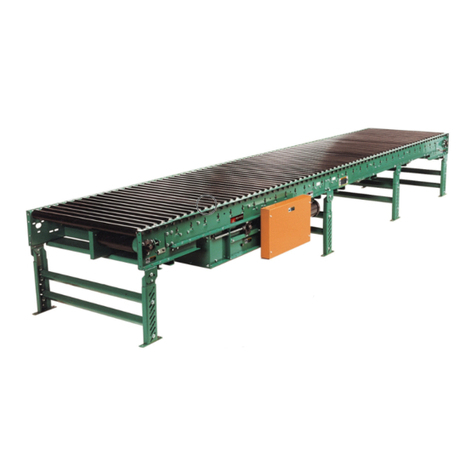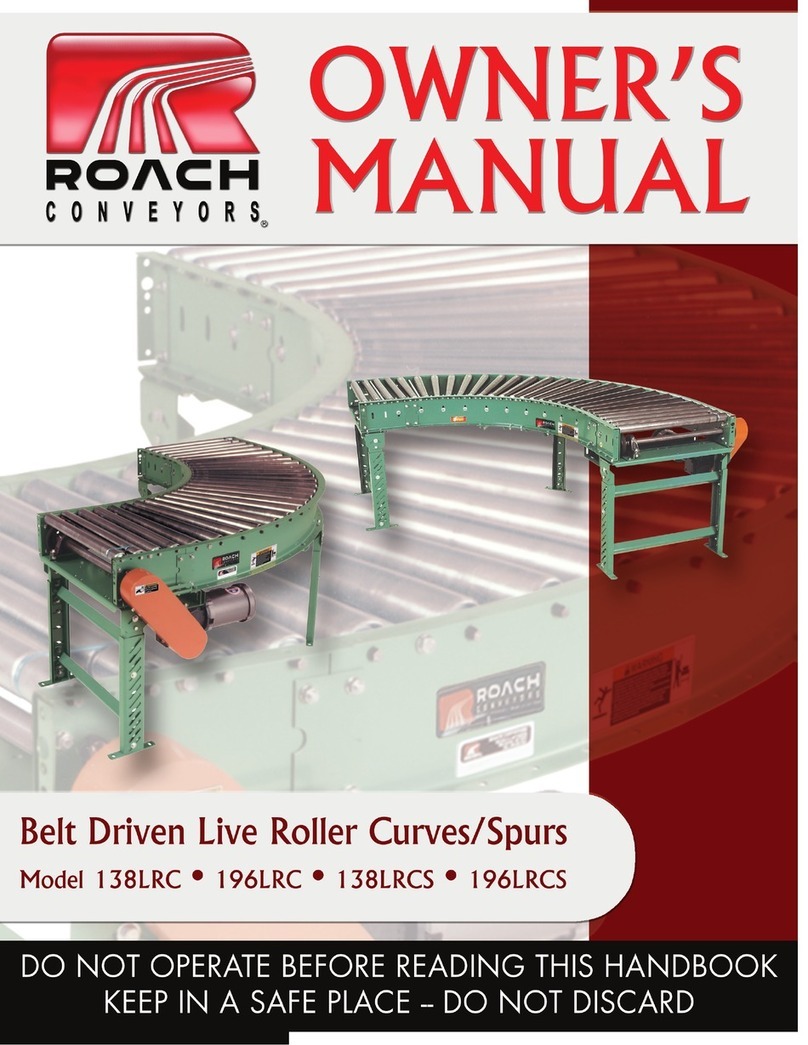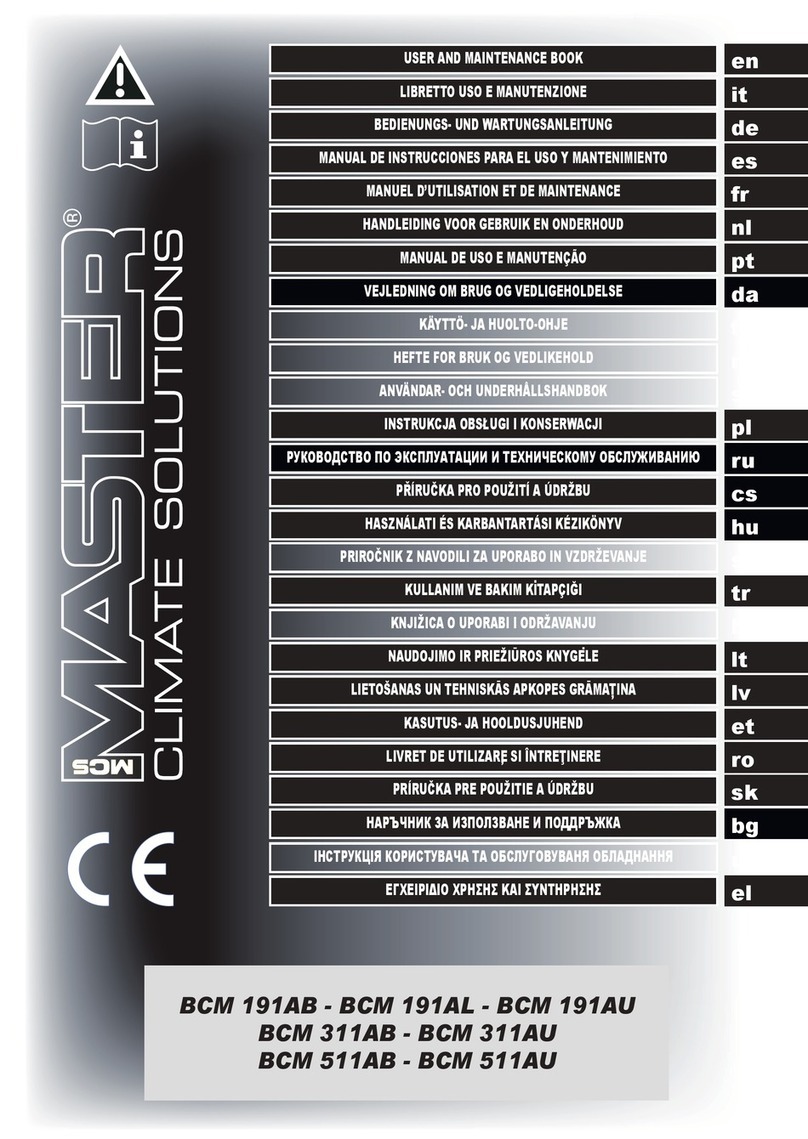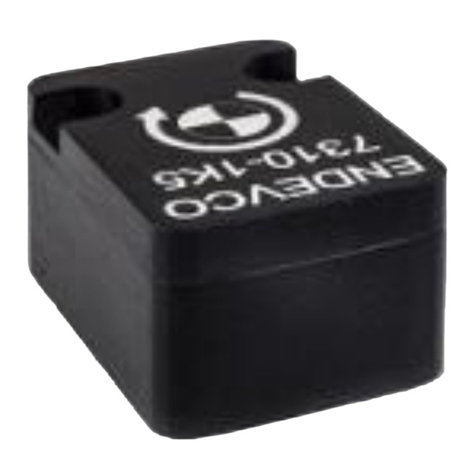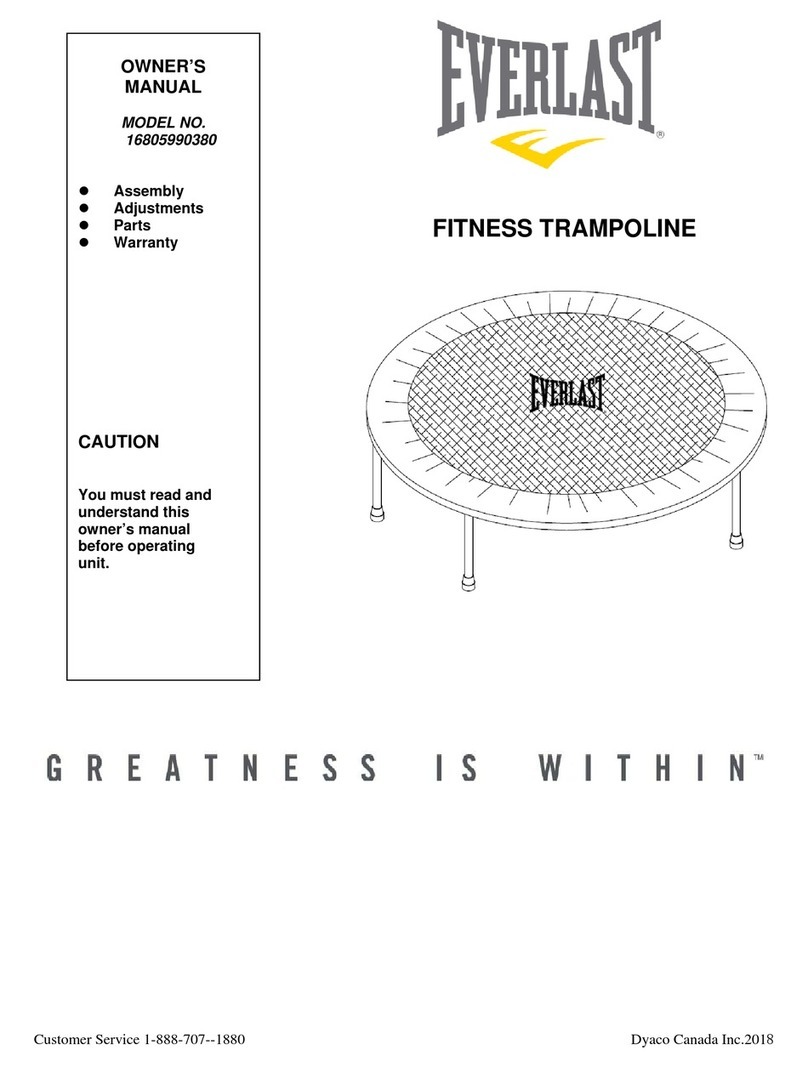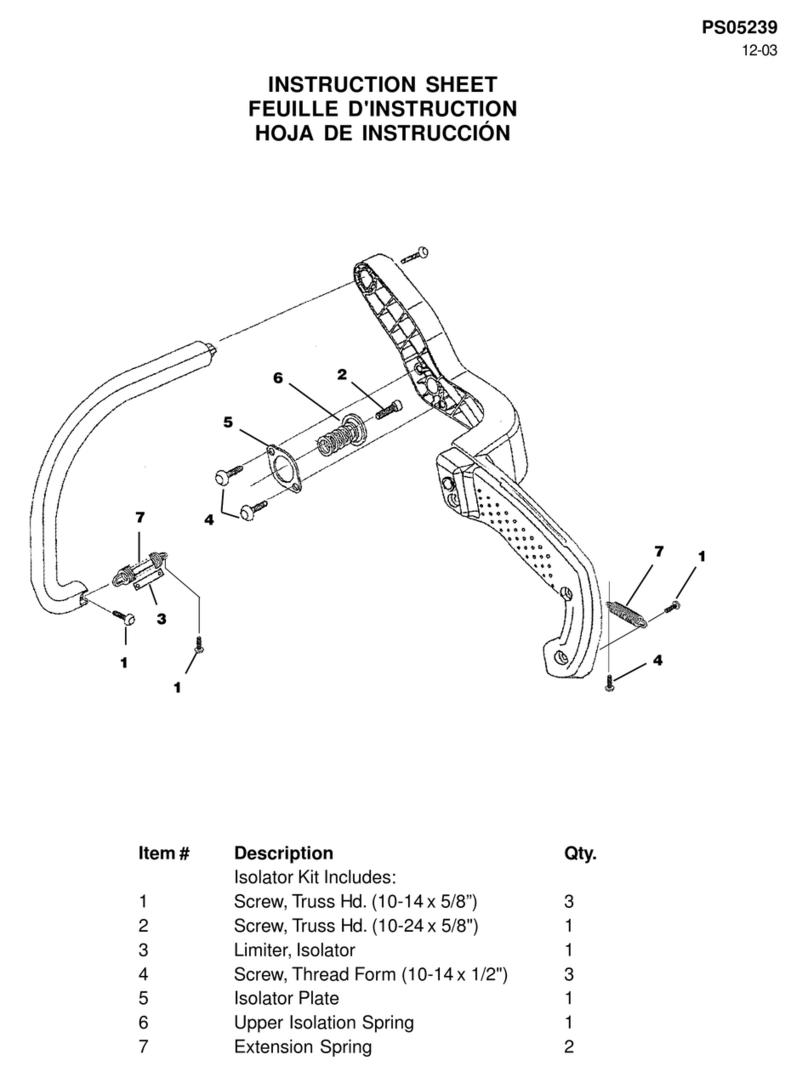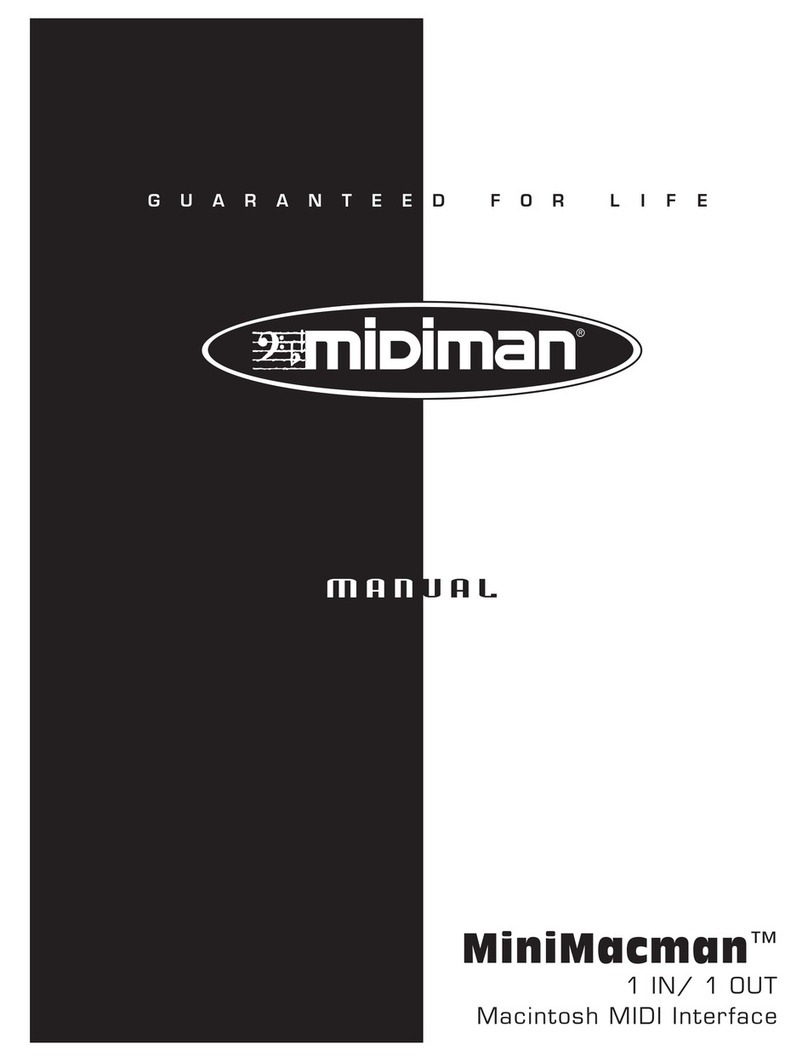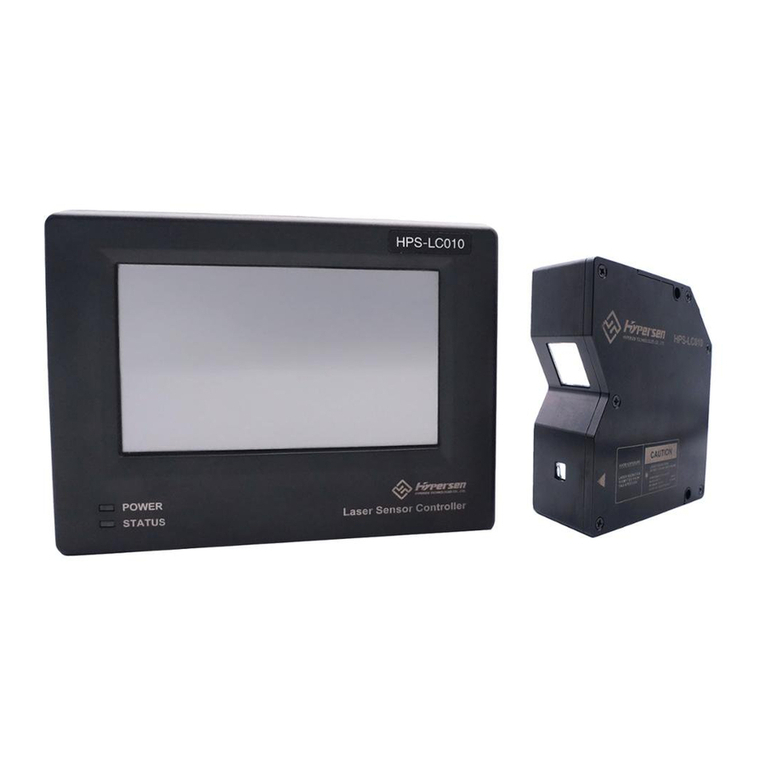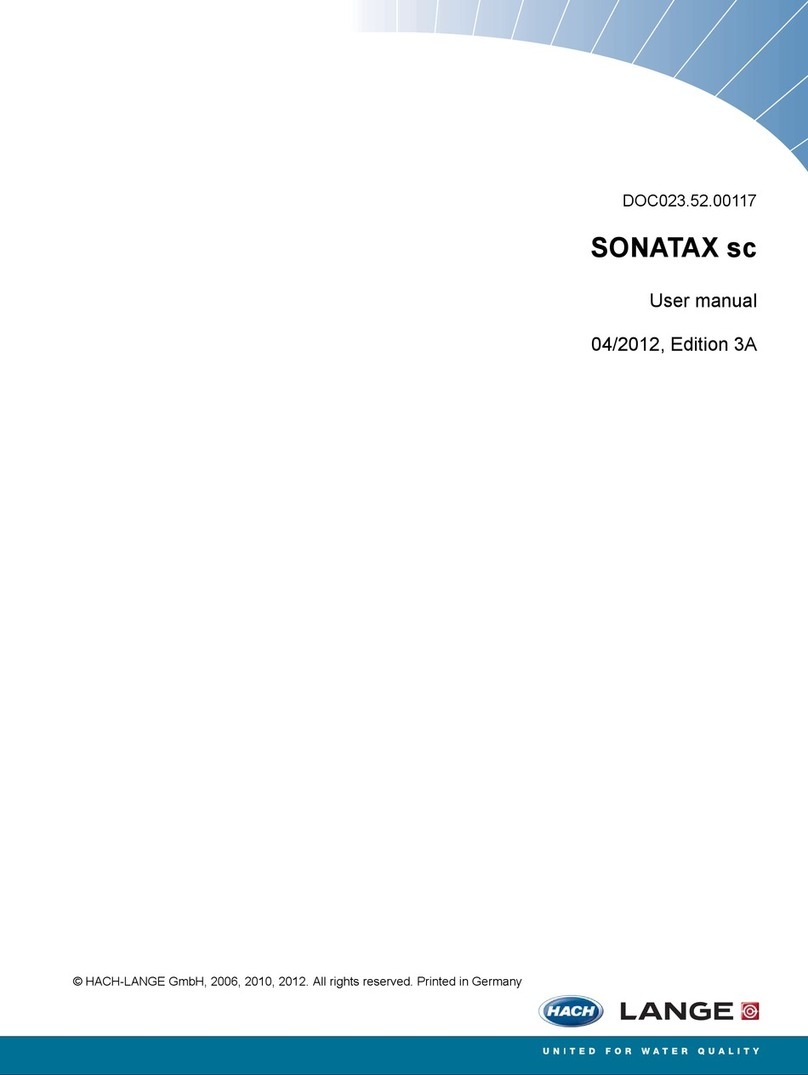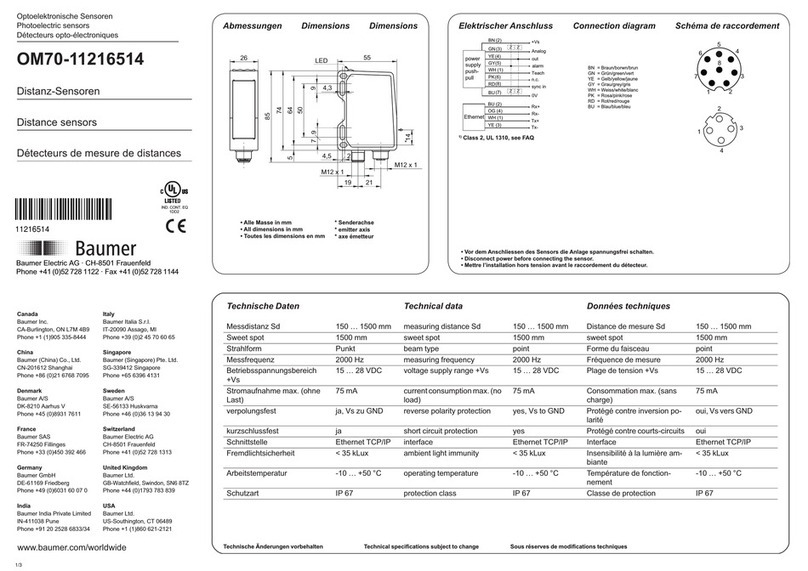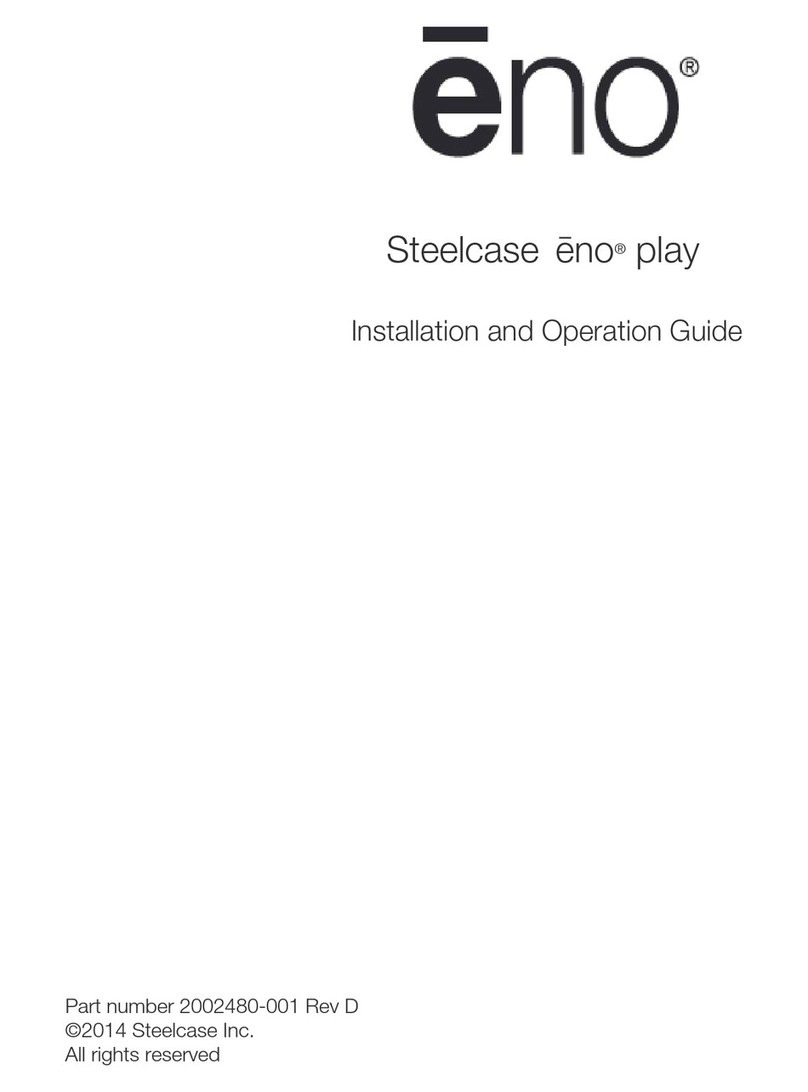Roach Conveyors 725TB User manual

Installing and Maintaining Your Roach Conveyor

WARNING LABELS
ABOVE: Label attached to all protective guards (drives, roller guards, etc.) ABOVE: Label placed near all pulleys (center drives, end drives, tail pulleys)
ABOVE: Label placed near all drive assemblies and at 30’ intervals
-Warning Labels.............................................. 2
CAUTIONS, WARNINGS AND HAZARDS............ 3
-Important Safety Guidelines............................. 3
RECEIVING AND INSPECTION............................ 4
-Shortages, Damages & Return Auth................. 4
-Uncrating and Storage.................................... 4
-Safety Popout Roller Standard ......................... 4
GENERAL INSTALLATION INFORMATION ........... 5
-Attaching Bed Sections.................................... 5
-Couplings and Unit Squareness ....................... 5
-Safety Connector Brackets (How to Order) ....... 5
INSTALLATION OF SUPPORTS ............................
-Identifying/Installing Perm. Floor Supports.......... 6
-Installing Knee braces and Casters................... 6
POLYTIER SUPPORTS,CEILING HANGERS
AND UNDERTRUSSING...................................... 7
-Installation of Polytier Supports ....................... 7
-Installation of Ceiling Hangers ........................ 7
-Installation of Undertrussing ............................ 7
INSTALLATION OF BELTING .............................. 8
-Belt Connections ............................................. 8
-Maintaining Proper Belt Tension ...................... 8
-Nose-Over & Snub Roller Guard Adj............... 8
START-UP PROCEDURES..................................... 9
-Drive Chain and Sprocket Alignment ............... 9
-Drive Chain and Sprocket Tension ................... 9
-Gear Reducer .with Posivent Plug..................... 9
-Preparing for Initial Start-Up ........................... 9
BELT TRACKING............................................... 10
-General Information ..................................... 10
-Skewing Return Rollers.................................. 10
-Erratic Tracking at Start-Up ........................... 10
-Advanced Tracking Adjustments .................... 10
MAINTENANCE SAFETY PRECAUTIONS ............ 11
-Before Performing Maintenance..................... 11
-Maintenance and Follow-Up Details............... 11
-Periodic Maintenance Schedule ..................... 11
-Misc. Lubricants............................................ 11
-Report on Miscellaneous Maint Performed...... 11
BELT PATH....................................................... 12
-Illustrations for Units with End Drive............... 12
-Illustrations for Units with Center Drive........... 12
BELT PATH....................................................... 13
-Illustrations for Incline Units with End Drive..... 13
-Illustrations for Incline Units with Center Drive. 13
MAINTENANCE AND LUBRICATION ................. 14
TROUBLE SHOOTING & REPLACEMENT PARTS.. 15
-Trouble Shooting / Serial Plate...................... 15
PARTS LISTS FOR 725TB................................... 16
-Parts List....................................................... 16
-Drawings ..................................................... 17
PARTS LISTS FOR 700SB .................................. 18
-Parts List....................................................... 18
-Drawings ..................................................... 19
PARTS LISTS FOR 700BSB ................................ 20
-Parts List....................................................... 20
-Drawings ..................................................... 21
PARTS LISTS FOR 450BOS................................ 22
-Parts List....................................................... 22
-Drawings ..................................................... 23
PARTS LISTS FOR 796RB .................................. 24
-Parts List.................................................. 24-25
-Drawings ..................................................... 26
PARTS LISTS FOR 751RB .................................. 27
-Parts List.................................................. 27-28
-Drawings ..................................................... 29
PARTS LISTS FOR 796RBF................................. 30
-Parts List.................................................. 30-31
-Drawings ..................................................... 32
PARTS LISTS FOR 700SBF................................. 33
-Parts List.................................................. 33-34
-Drawings ..................................................... 35
PARTS LISTS FOR INTEGRAL FEEDERS ............... 36
-Parts List ..................................................... 36
-Drawings ..................................................... 37
PARTS LISTS FOR CHAIN DRIVEN FEEDERS ....... 38
-Parts List ..................................................... 38
-Drawings ...................................................... 39
WARRANTY .................................................... 40
TECH HANDBOOK FOR 725TB/700SB/700BSB/450BOS
796RB/751RB/796RBF/700SBF

DO NOT OPERATE BEFORE READING THIS MANUAL!
KEEP IN SAFE PLACE--DO NOT DISCARD!
This manual was prepared as a “how-to-guide” for installers, end-users and maintenance personnel. It is also intended to educate both owner
(purchaser) and all individuals working around the unit, of potential hazards.
Conveyors contain many moving parts--pulleys, belting, chains, sprockets, shafts, rollers, etc. Therefore, it is imperative to become familiar with
basic unit operation and know all points of potential hazards.
This manual must be read by all new users before operating or working near this unit.
CAUTIONS, WARNINGS AND HAZARDS
NEVER connect belt conveyors directly to gravity conveyors, machinery
or fixtures without using connector brackets & pop out roller.
ALWAYS anchor permanent supports to floor (or mounting
surface). Use 3/8” x 2-1/2” (or longer) wedge anchors for
permanent installation in concrete flooring.
It is the responsibility of the customer and installation personnel to
supply and install net or mesh guarding on overhead mounted
conveyors to prevent product and/or debris from falling to floor in
areas where required.
If belt conveyor pulleys are adjusted during installation or
maintenance, nip point guard (at drive end on end drive unit) must
be readjusted. Nip point guard (take-up end) is automatically
adjusted when take-up pulley is adjusted. Nip point guards at both
ends of conveyor (center drive) must be readjusted. Center drive
guards MUST be replaced after installation or maintenance.
Before unit is ready for operation, snub roller guard (cover) must be
adjusted to ensure safe unit operation.
Belt lacing must be kept in good condition for safe work
environment.
To check drive sprocket alignment, shut “OFF” and lock out power
source before attempting any adjustments.
Electrical controls must be designed by a qualified electrical
engineer to ensure that appropriate safety features (emergency
stops, pull cords, switches, etc.) are installed on unit for safe
operation. Before conveyor start-up, all operators and other
personnel coming in contact with unit must be properly trained and
must have read accompanying Tech Handbook.
Upon start-up, if belt tracks to one side, turn unit “OFF”, lock
out power source and confirm that conveyor is square and that
all prime tracking components are square with bed. Belt tracking
adjustments should be performed by trained personnel ONLY. Read
section on “Belt Tracking” completely before attempting belt tracking
adjustments.
Only trained personnel shall perform maintenance functions. Before
maintenance operations are performed, shut conveyor “OFF” and
lock out power source to prevent unauthorized start-up. When
maintenance is completed, only authorized personnel shall be permitted to
start conveyor following maintenance or other emergency shut-off.
Do not operate conveyor with protective guards removed. This
includes chain guards, belt guards, snub roller guards, center drive
guards and any other safety guard.
Do not walk, ride, climb, or touch moving parts on a conveyor in
operation.
Do not wear loose clothing or uncovered hair around conveyor.
Do not work near conveyor without knowing how & where to shut
power “OFF” and lock out power source.
Do not remove jammed product with conveyor running.
Do not replace parts or perform
maintenance on conveyor, or moving conveyor parts, without first
shutting “OFF” power to conveyor and locking out power source.
Do not connect gravity to powered conveyor without safety gravity
connector brackets.
To prevent electrical shock, conveyor must be grounded, and have
proper electrical connections in accordance with federal, state, and
local codes.
Safety pop out rollers in conveyors installed above 7’-0” elevation
must be retained by guard rail, clips, etc. Safety pop out rollers must
be allowed to pop out when conveyors are installed at or below
7’-0” elevation.
It is the responsibility of conveyor end-user to comply with all safety
standards including OSHA and other federal, state, and local codes
or regulations. Install protective guarding and other related safety
precautionary equipment to eliminate hazardous operating condi-
tions which may exist when two or more vendors supply
machinery for related use.
Any violation of above safety instructions hereby removes all product
liability claims from Roach Manufacturing Corporation®.
Warning: All personnel coming in contact with this conveyor should be
aware of the following safety guidelines BEFORE USING OR WORKING
AROUND CONVEYOR. Note: always notify Roach Manufacturing®
whenever any conveyor is used in an application or condition other
than was originally intended. Failure to notify Roach® may allow
conveyor to be operated in a hazardous operating condition. Injuries
resulting from negligence or violation of safety instructions hereby
removes responsibility of product liability claims from Roach®.
IMPORTANT SAFETY GUIDELINES

Before uncrating, check the quantity of items received against bill
of lading to confirm that all material has been received. Examine the
condition of the equipment to determine if any damage has occurred.
It is possible that some items may become separated from the
original shipment. Therefore, when receiving goods, it is imperative that
the bill of lading (or, accompanying freight documentation) be checked to
ensure receipt of ALL units ordered including ALL accessories.
Damage and/or shortage in shipment should be reported immedi-
ately to both vendor and carrier. Obtain a signed
damage report from carrier agent and send copy to vendor.
Do not repair any damage before obtaining this report.
For damaged shipments, consult factory to determine if entire ship-
ment must be returned to factory for repair or if an immediate order
should enter production to produce a new, replacement shipment.
Note: Do not return goods to factory without prior, written return
authorization. Unauthorized returns are subject to refusal at factory.
RECEIVING AND INSPECTION
SHORTAGES, DAMAGES AND RETURN AUTHORIZATIONS
UNCRATING AND STORAGE
Carefully remove crating and look for essential components and
specific accessories that may have been boxed and attached (or
‘banded’) to crating material. Safety pop out rollers, guard rails and
hardware are often packaged and shipped in this manner. Save all
hardware for subsequent use by installation personnel.
The drive section will be shipped mounted to its actual operat-
ing bed section (see illustration above). Intermediate bed sections are
shipped mounted on top of drive bed section with formed steel stiffener
(spacer) brackets.
In illustration to the left, a model 700SB is shown palletized with
belting and return rollers for all bed sections mounted to top of crate
which is prepared for shipment.
Some items (electric motors, gearbox, etc.) may be shipped direct
from their manufacturer to final destination. Thus,
the conveyor may consist of two or more separate shipments.
Belting must be housed in dry quarters. Do not store belt on edge
(see illustration below).
Never Store belt placed directly on floor. Elevate to prevent contact
with floor moisture.
4
SAFETY POPOUT ROLLER STANDARD
Always leave popout roller (see illustration at left) in place when
permanently attaching any gravity conveyor to power conveyor.
Never connect powered belt conveyors directly to gravity convey-
ors without using the pop out roller.
Never connect power belt conveyors to any other conveyor or equip-
ment with out the safety popout roller in place as shown at left.

5
SAFETY CONNECTOR BRACKETS (450BOS ONLY)
Always use gravity connector bracket with pop out roller (see illustration)
to permanently attach any gravity conveyor to 450 BOS conveyor.
Never connect powered conveyors directly to gravity conveyors without
using connector brackets with pop out roller.
This simple connection eliminates hazardous pinch points that would oth-
erwise exist by attaching a gravity conveyor directly to a powered belt unit.
Connector Brackets are supplied as an optional component for the
450BOS.
Connector brackets may not have been originally required for unit appli-
cation, but they are readily available.
GENERAL INSTALLATION INFORMATION
ATTACHING BED SECTIONS
Use mechanical hoist (fork truck or other available means) to raise
bed sections to approximate installed elevation. Mate intermediate sec-
tions with either butt couplings or splice plates to join bed sections (see
illustration).
One of the most critical elements of proper installation is unit
squareness. Check drive pulley, tail pulley, snub roller (if used in
drive assembly) and return roller assemblies to ensure these com-
ponents are square with unit bed (see ‘Belt Tracking’ section later in
handbook for detailed information).
The unit must be installed at level elevation across the width to pre-
vent erratic belt tracking.
When preparing to install conveyor:
Locate all component sections in the actual installation area.
After uncrating, place unit bed sections conveying side up. Each
bed section is marked to indicate proper sequence for mating (see illus-
tration for typical bed section labels).
It is critical for bed sections to be field assembled in proper
sequence following bed section labels. Refer to bed section drawing
for location of supports and assemble as shown.
Conveyors are set up at the factory, bed section labels are applied, unit
is test run and receives rigorous quality assurance inspection. At this time the
unit becomes field-ready. Therefore, it is critical that field installation person-
nel re-assemble unit by mating beds in accordance with bed section labels
(and bed section drawing).
Create a reference base line on floor by marking a chalk line along the
center line of conveyor. Follow base line when installing unit.
COUPLINGS AND UNIT SQUARENESS
WARNING
Never connect belt conveyors directly to gravity conveyors, machinery or fixtures without using connector brackets with pop out roller.
Splice Plate (MODEL 700SB/700BSB/450BOS/700SBF) Splice Plate (MODEL 796RB/751RB/796RBF)

Knee braces add strength to permanent supports and stability to units
in portable applications. Install knee brace (when supplied) after
final permanent support installation and elevation adjustment. Its
pivot bracket is bolted to underneath side of lower conveyor flange
and slotted end is attached to outer side of support.
Knee braces are most commonly used at the terminal ends of
long runs of conveyor lines and are recommended on inclined (or
declined) floor-to-floor belt conveyors for added stability.
INSTALLING KNEE BRACES AND CASTERS
INSTALLATION OF SUPPORTS
IDENTIFYING/INSTALLING PERMANENT FLOOR SUPPORTS
Permanent supports may be installed on conveyors at various loca-
tions. However, it is most common to use single tier permanent
floor supports at each end of a powered section (see illustration A)
and where intermediate bed sections are adjoined (see illustration
B). Notice intermediate supports have two lag bolts in a diagonal
pattern while end (terminal) supports have four lag bolts, one in
each of the four foot plate mounting holes.
When two (or more) powered conveyors are placed end-to-end,
a single tier permanent support may be used at the end junction
commonly supporting both units. Check load rating of support
before using this method of installation.
Adjust elevation to top of conveyor by loosening bolts in support
uprights, raising or lowering conveyor and fully tightening bolts at
desired elevation. Tighten all bolts in supports before unit opera-
tion. Complete support installation by lagging support attachment
plates to floor. Confirm that unit is level across width of conveyor
before completing final support height adjustment.
Always anchor permanent supports to floor (or mounting surface).
Use 3/8” x 2-1/2” (or longer) wedge anchors for permanent
installation in concrete flooring.
Supports are normally shipped at minimum support height.
6
*MINIMUM/MAXIMUM SUPPORT HEIGHT
SM-1................... 7-1/4”-10-1/4” SM-7 ...............34-1/4”-46-1/4”
SM-2...................10-1/4”-13-1/4” SM-8 ...............46-1/4”-58-1/4”
SM-3...................13-1/4”-16-1/4” SM-9 ...............58-1/4”-70-1/4”
SM-4...................16-1/4”-22-1/4” SM-10 .............70-1/4”-82-1/4”
SM-5...................20-1/4”-26-1/4” SM-11 .............80-1/4”-92-1/4”
SM-6...................24-1/4”-36-1/4” SM-12 .............92-1/4”-104-1/4”
For a complete drawing and parts list log onto http://roachconveyors.com/belt-conveyor.htm
WARNING
Always anchor permanent supports to floor (or mounting surface).
Use 3/8” x 2-1/2” (or longer) wedge anchors for permanent installation in concrete flooring.

Polytier supports provide convenient installation method for two or
more tiers of conveyor.
To install, raise conveyor to desired eleva-
tion (approximate). Place 1” inside diameter cross pipe underneath
lower conveyor flange. Attach cross pipe to upright legs. Use
U-shaped retainer (“hat”) bracket to connect cross pipe to lower con-
veyor flange. Do not tighten
fully at this time.
There are two styles of attachment brackets available for use with
polytier supports. Minimum elevation style (see TYPE “0”, illustra-
tion above) offers lowest unit elevation, 0” + frame depth utilizing
L-shaped mounting bracket. Standard elevation style offers unit
elevation of 3-1/2” + frame depth and includes bracket welded to
cross pipe which is bolted to upright legs during installation.
When unit is at operating elevation and unit has been checked
across width for level, tighten locking bolts in U-shaped bracket.
Add knee braces for unit rigidity.
7
INSTALLATION OF CEILING HANGERS
Ceiling hangers are frequently used in high-elevation applications for suspension
from ceiling. The 5/8” diameter (#11 UNC) all threaded rod is supplied to allow
infinite vertical adjustment along the length of the suspension rod (see illustration
above).
Attach and firmly tighten U-shaped retainer (“hat”) bracket to underneath side of
lower conveyor flange with hardware provided
to hold cross pipe (1” inside diameter) against underneath side of conveyor.
Do not tighten cross pipe locking bolts (these attach in the bottom of the U-shaped
retainer bracket) until threaded suspension rods have been firmly secured to ceiling
structure.
To adjust conveyor elevation, tighten or loosen lower nut and jam nut on threaded
suspension rods to desired elevation. A lock washer must be used on suspension
rods to maintain unit at desired elevation.
When unit is at operating elevation and unit has been leveled across bed width,
tighten locking bolts in U-shaped bracket to secure position of cross pipe.
It is the responsibility of the customer and installation personnel to supply
and install net or mesh guarding on conveyors mounted overhead to pre-
vent product and/or debris from falling to floor in areas where required.
POLYTIER SUPPORTS, CEILING HANGERS AND UNDERTRUSSING
INSTALLATION OF POLYTIER SUPPORTS
When installing some conveyors, using a permanent support or ceiling hanger is sim-
ply not practical. In this situation, three bed sections (maximum) may be joined togeth-
er utilizing truss assembly, mounted underneath conveyor (see illustration at right).
Adjoin beds on floor using both connector rod support assemblies and connector rods
(5/8” diameter-11UNC threaded rod). The diagonal connector rod is used not only to
support the intermediate bed section joint but it is instrumental for setting and maintain-
ing proper tension across intermediate spanned beds.
Use mechanical hoist (fork truck or other means) to raise pre-assembled bed sections
(with undertrussing) to desired elevation for final installation.
Use diagonal connector rods to level the undertrussed beds both along and across
the conveyor. Remember that the tension must provide adequate for both dead load
(conveyor weight) and product load during unit operation.
It is the responsibility of the customer and installation personnel to supply and
install net or mesh guarding on conveyors mounted overhead to prevent prod-
uct and/or debris from falling to floor in areas where required.
INSTALLATION OF UNDERTRUSSING

8
INSTALLATION OF BELTING
BELT CONNECTIONS
MAINTAINING PROPER BELT TENSION
Maintaining proper belt tension is vital to unit operation. Enough tension should be
maintained so that drive pulley does not slip under unit fully loaded conditions.
It is perfectly normal for a belt to stretch (in varying climatic conditions) under rated
loading. Therefore, a short belt insert or “belt patch” (or patches) is provided for
future removal when belting has stretched beyond means of conveyor take-up
assembly. For yet additional belt take-up, the belt should be cut and re-laced to
maintain proper belt tension.
To adjust conveyor take-up, adjust position of take-up rod (see illustration above)
as required. Remember to equally adjust both sides to hold take-up pulley square
(to maintain unit squareness for belt tracking). Operating unit with slipping belt will
decrease life of both belting and pulley lagging.
Also, do not operate unit with too much tension on belt. This will
decrease belt life and may harm unit drive and take-up bearings.
Over tensioning belt requires additional horsepower from unit drive
and can cause belt mistracking.
Conveyor belting is cut to proper length, laced and assembled on
conveyor at the factory. It is test run and inspected before it is shipped to
its final destination.
Before field installation of belting, it is critical to determine the correct
side to be placed down. One of the most common problems associated
with belt installation involves placing the incorrect side down.
PVC belting is most commonly supplied as “COS” (cover one side).
The opposite side, or side to be placed down, is a friction surface for
decreased friction and improved conveyability. The friction side appears
dull and grainy. ALWAYS place this side down against the conveyor bed.
The cover side is darker and shiny.
If unit is shipped “knocked down,” belt must be re-threaded on unit
during installation. (See page 13-14 for proper belt paths.)
Join ends of belt as shown with lacing pin. Loosen threaded take-up
rods (if necessary) at take-up pulley equal amount on both sides and re-
adjust when belt is installed keeping pulley square with conveyor bed. A
belt puller can also be used to join belting.
Belt lacing must be kept in good condition for safe work environment.
MAKE ADJUSTMENTS HERE
NOSE-OVER AND SNUB ROLLER GUARD ADJUSTMENT
Nose-over assemblies may be supplied (optional) when slider/roller belt conveyors are
inclined or declined to ease the transition from inclined to horizontal. A single nose-over
assembly consists of one set of nose-over brackets with carrier roller, one snub roller with
snub roller guard and attachment bracket. A double nose-over assembly includes one
additional set of nose-over brackets and carrier roller.
Beds are cut and nose-over brackets and rollers are installed at the factory. Before unit
is ready for operation, final adjustment of snub roller assembly is required to ensure safe
unit operation. Snub roller guard (cover) should be set (see illustration above) with 1/4”
belt clearance between bottom of belt and top of guard, both sides of guard, during final
installation.
caution: Before unit is ready for operation, snub roller guard (cover) must be
adjusted to ensure safe unit operation.

Warn all personnel to keep clear of CONVEYOR during unit start-up
9
START-UP PROCEDURES
DRIVE CHAIN AND SPROCKET ALIGNMENT
DRIVE CHAIN AND SPROCKET TENSION
Maintaining proper chain tension is especially important. Again, a peri-
odic visual inspection is recommended to ensure chain tension within a
pre-determined operating range.
Remember, before any adjustments are attempted, conveyor must be
shut “OFF” and power source locked out.
Before replacing chain guard cover, check to see if drive chain is operat-
ing within 1/2” range (see illustration). If unit is out of tolerance, adjust-
ment is necessary.
To adjust drive chain tension, tensioner bolt located on reducer push
plate should be tightened (rotate clockwise) if chain tension
is loose. Tighten until proper operating range is achieved. If chain
tension is too tight, loosen tensioner bolt (rotate counterclockwise) as
required. When adjustment is complete replace chain guard cover.
WARNING: Do not operate unit until chain guard cover is replaced.
Serious operator or other personal injury could result if protective
guarding is not replaced.
Set up and maintenance of drive sprocket and drive chain alignment is
critical. A periodic visual inspection is recommended to confirm align-
ment of drive components (which includes both drive sprockets and drive
chain). Should set screws become loose, drive sprockets are subject to
excessive wear and ultimately, to untimely replacement.
To check drive sprocket alignment, it is imperative that conveyor is
shut “OFF” and power source is locked out before any adjustments are
attempted.
Remove chain guard cover and place straight-edge (see illus-
tration) across face of both drive sprockets. If re-alignment is necessary,
loosen set screws and adjust drive sprockets as required. Remember to
securely tighten set screws when alignment is complete. Before replacing
chain guard cover, check drive chain tension as described in following
section, “Drive Chain and Sprocket Tension.”
Do not operate without guards in place.
GEAR REDUCER WITH POSIVENT
PosiVent Unique design incorporates
a single seam construction. Factory
filled with synthetic lubrication for
universal mounting. Lubed for life, no
oil changes are required.
No vent plug required.
PREPARING FOR INITIAL START-UP
Provisions must be in order to instruct all personnel coming in contact
with conveyor on the location of emergency stops,
pull cords, etc.
A routine maintenance program should be implemented before unit is
placed into operation so that fundamental unit components are attended
to. This maintenance program should include an inspection to ensure
that any dangerous or hazardous operating conditions are noted and
IMMEDIATELY corrected, as well as including electrical and mechanical
unit inspections and corrections.
Finally, when conveyor is initially started, an immediate visual inspection
should include motor, gear reducer, belt tracking (discussed in following
section under “Belt Tracking”) and related adjustments noted in handbook
ELECTRICAL CONTROLS
Electrical controls must be designed by
a qualified electrical engineer to ensure
that appropriate safety features (emer-
gency stops, pull cords, switches, etc.)
are installed on unit for safe operation.

One of the most common and productive
means to track conveyor belting is to skew roll-
ers. Excess skewing of rollers, which may cause
belt to bow and may force belt to rub on side
frame causing belt damage, usually will not
completely solve belt tracking problems
ONLY trained personnel should make belt
tracking adjustments. Shut unit “OFF” and
lock out power source before attempting
adjustments in belt tracking.
To adjust return rollers, simply loosen attach-
ment bolt that secures bracket to the side of
the conveyor (see illustration above). Move
bracket to skew return roller assemblies (as
noted in Advanced Tracking Adjustments later
in manual). Remember to make adjustments in
SMALL increments.
When adjustment is complete, tighten bolt
firmly securing return roller bracket to the side
of the conveyor.
When adjustments noted in section above
have been completed and belt continues to
track erratically, a second series of tracking
adjustments are necessary.
First, determine the infeed and discharge ends
of the conveyor. The following adjustments
will be made with the infeed end as the refer-
ence point.
If belt tracks toward side “R” (see illustration
above), skew return rollers in direction “B” to
shift belting toward side “L”. If belt tracks
toward side “L”, skew return rollers in direc-
tion “A” to shift belting toward side “R”.
Skewing head pulley (pulley at unit discharge)
in direction “A” moves belt toward side “L”.
Skewing head pulley in direction “B” moves
belt toward side “R”.
As a rule of thumb, do not use drive and
take-up pulley for belt tracking since this will
overly increase belt tension. When adjusting
take-up pulley, adjust both sides an equal
amount.
As a last resort, shift the tail pulley in
direction “B” to move belting toward side “L”;
shift head pulley in direction “A” to move
belting toward side “L”.
Improper tracking of conveyor belting should
be considered a “systems” problem rather than
solely a deficiency in the belt. To explain, a belt
is tracked with adjustments made in the system or
entire conveyor rather than just the belting.
Upon start-up, if belt tracks to one side of
unit, turn unit “OFF”, lock out power source
and confirm that conveyor is square. All
prime tracking components must be square
with bed including drive pulley, tail pulley,
snub roller and return rollers.
Both sides of
take-up should be adjusted exactly the same
amount. The conveyor should be level across
the width of the unit. Confirm that the belt has
been properly threaded (see “Belt Path” section)
and that belt lacing is square with the belt edges.
Make adjustments as necessary; however, all
adjustments should be made in small increments.
Start conveyor again and operate for at least
ten minutes once initial phase of adjustments are
complete. If belt continues to track erratically, turn
unit “OFF” before belt is allowed to run so far off
center that it rubs side of conveyor.
BELT TRACKING
GENERAL INFORMATION 10
Upon initial use the belting will stretch after
a few days of operation. Remember that
maintaining proper belt tension is a crucial
element in belt tracking.
Therefore, this stretch-
ing of a belt when placed into operation may affect
its ability to track. Adjustment of the take-up pulley
will likely adequately compensate for initial stretch.
However, depending on the overall unit length,
removal of a belt patch may be necessary to correct.
ONLY trained personnel should make belt
tracking adjustments.
Belt must be tracked in both unloaded and loaded
situations. The return direction of the belt must
clear supports, ceiling hangers, floor openings,
etc. Dragging on such components will contribute
to belt tracking problems and is certain to damage
belting at extended intervals.
In a reversible application, a belt that runs off to
one side in one direction will likely run off to the
other side when operated in the opposite direc-
tion. Do not allow belt to rub against side of con-
veyor frame, which will surely damage belt.
SKEWING RETURN ROLLERS
ERRATIC TRACKING AT START-UP
ADVANCED TRACKING ADJUSTMENTS

MAINTENANCE AND FOLLOW-UP DETAILS
11
MAINTENANCE SAFETY PRECAUTIONS
BEFORE PERFORMING MAINTENANCE
While performing maintenance do not wear loose clothing. Immediately
report any hazardous conditions--sharp edges, pinch (or nip) points or other
conditions that may result when several manufacturers supply machinery
which may create operating hazards.
When using mechanical aids such as hoists, cables, or cranes exercise
extreme caution to prevent damage to conveyors or other integrated machin-
ery which may create a working hazard when maintenance is completed and
units are in operation.
Clean up any spilled lubricants or other materials used in the main-
tenance process or those which may be deposited during unit operation.
Eliminating poor housekeeping practices increases unit efficiency while creat-
ing safer personnel working conditions.
After maintenance, conduct visual inspection to ensure that all safety
devices and guards have been replaced. Confirm that all units are clear
of tools, debris or other items. Before starting conveyor, check condition of
conveyor warning labels (see “WARNING LABELS” at front of handbook). If
labels have been destroyed or are not clearly legible, call 870.483.7631 to
receive replacement labels. Placement of warning labels is critical to avoid
unauthorized unit operation which may result in hazardous working condi-
tions for all related personnel coming in contact with conveyor.
Warn personnel that conveyor is being prepared for start-up and to stay
clear of unit. Do not start conveyor until all personnel are clear. When main-
tenance is completed, only authorized personnel shall be permitted to start
conveyor following maintenance or other emergency shut-off.
One of the most important guidelines for maximizing conveyor operation
and personnel safety is to implement a regular maintenance schedule and
train personnel on the appropriate needs of the specific unit.
Only trained personnel shall perform maintenance functions.
Before maintenance operations are performed, conveyor must
be shut “OFF” and disconnects locked in the “OFF” position to prevent
unit from unauthorized start-up during maintenance. All personnel
should be informed of the safety procedures associated with unit main-
tenance and performance.
Do not perform any work on conveyors or conveyor system while in
operation unless it is impossible to otherwise conduct adjustment, lubrication
or other maintenance function.
Only experienced, trained personnel possessing advanced hazards-train-
ing should attempt such critical operations.
MAINTENANCE PERIODIC MAINTENANCE SCHEDULE AND LUBRICATION
**NOTE: Temperatures listed indicate the nominal operational temperature for the specific lubricant listed. This does not imply that the bearing housing, seals or any other conveyor unit
component is rated to operate in this specific temperature range or environment. 250°F is the maximum operating temperature for standard bearing lubricants and bearing components.
Although various lubricants may enhance bearing operation, special-order bearings may be required to achieve optimal bearing performance. For additional information, consult factory.
WEEKLY RECOMMENDED MAINTENANCE SCHEDULE*
COMPONENT
BELTING
PILLOW BLOCK /
FLANGE BEARINGS
UNIT
SAFETY
CHECK
DETAIL OF MAINTENANCE
Inspect belt tracking
Lubricate in dirty, dusty, or
moist/wet conditions
Confirm placement of all guards, pop-out
rollers, warning labels & check for loose
bolts, nip points & other hazards
MONTHLY RECOMMENDED MAINTENANCE SCHEDULE*
COMPONENT
GEAR REDUCER
BELTING
PILLOW BLOCK /
FLANGE BEARINGS
DRIVE CHAIN
DRIVE SPROCKETS
DETAIL OF MAINTENANCE
Check for leaks
Inspect belt tracking
Lubricate in dirty, dusty, or
moist/wet conditions
Check for proper operating tension &
overall wear & lubricate
Check for overall wear & re-tighten set screws
PERIODIC RECOMMENDED MAINTENANCE SCHEDULE*
COMPONENT
GEAR REDUCER
DRIVE CHAIN
MOTOR
DETAIL OF MAINTENANCE
Check for leaks
Clean (brush in solvent) & re-lubricate by ap-
plying lubricant to inside of chain with brush
or spout can at 2000 hour intervals
Check & clear motor ventilation openings
at 500 hour intervals. Check miscellaneous
operating conditions (normal heat & noise)
MISC. LUBRICANTS**
General Purpose Grease
(For -30°F to 300°F operation)*
For Extreme Temperature Operation
(-90°F to 350°F operation)*
Washdown Application*
(-30°F to 225°F operation)
(May require special consideration
consult factory)
General Purpose Oil
Shell Dolium R (Shell Oil Co.)
(or suitable equivalent)
Mobiltemp SHC-32 (Mobil Oil Corp.)
(or suitable equivalent)
Shell Alvania No. 3 (Shell Oil Co.)
(or suitable equivalent)
SAE 10; SAE 20 OR SAE 30
*All charts are for guidelines in normal operating or ‘as noted’ conditions. Severe applications warrant additional maintenance.
**

BELT PATH
ILLUSTRATION FOR UNITS WITH END DRIVE
ILLUSTRATION FOR UNITS WITH CENTER DRIVE
If pulleys are adjusted during installation or mainte-
nance, it is crucial that nip point guard (at drive end)
is readjusted. See detail “A” above. Note: Nip point
guard on take-up end is automatically adjusted when
take-up pulley is adjusted.
If pulleys are adjusted during installation or mainte-
nance, it is crucial that nip point guards (at both ends
of conveyor) are readjusted. See detail “B” above.
Center drive guards MUST be replaced after installa-
tion or maintenance.
FLOW
FLOW
12

BELT PATH
ILLUSTRATION FOR INCLINE UNIT
FIXED END
PULLEY
BELT
RETURN
ROLLER
TAKE-UP PULLEY
TAKE-UP
PULLEY
DRIVE
PULLEY SNUB
ROLLER
NOSE-OVER
SNUB ROLLER
CAUTION: If pulleys are adjusted during installation or maintenance, it is crucial that nip point guards (at both ends of conveyor) are readjusted. See
DETAIL“A” at left. Center drive guards MUST be replaced after installation or maintenance. If optional feeder is used, nip point guards in end assem-
blies (including drive or fixed end pulley) must be adjusted when feeder pulleys are adjusted.
DETAIL “A”
Unit shown with optional
Chain Feeder
CHAIN DRIVEN AND INTEGRAL FEEDERS
Two types of feeders (both optional) are commonly supplied on floor-to-floor
belt conveyors. Horizontal chain driven feeders (see above illustration) are
powered from the inclined (or declined) conveyor section via slave drive con-
nection. This feeder requires one support at each end of the feeder and an
additional support at each intermediate feeder bed section when installing.
Integral feeders (see illustration at right) use a 3-pulley device to transfer the
belt from its inclined section to the horizontal feeder for loading or unloading
from the floor-to-floor conveyor. Here, the same type of belting, generally
supplied as 2-ply ruff-top, is used on both feeder and inclined section due to
the continuous travel of the belt. Note that the support at the terminal feeder
end must be 7” taller to top of support than the support assembly placed
under the 3-pulley device, which commonly supports both intermediate feeder
and inclined section.
NOTE: Optional integral feeders and chain driven feeders are often used
to transfer product from horizontal position to inclined or declined con-
veyor section. Always use feeder when transferring to or from gravity
conveyors.
CHAIN DRIVEN FEEDER INTEGRAL FEEDER
FLOW
13
MOTOR ALWAYS MOUNTED
ON HIGH SIDE

14
MAINTENANCE AND LUBRICATION
REPORT ON MISCELLANEOUS MAINTENANCE PERFORMED
REPORT ON MAINTENANCE
CONVEYOR REPAIRED INSPECTION DETAIL OF MAINTENANCE COMPLETED (OR INSPECTION)
MARK NO. BY DATE LIST PARTS REPLACED OR REPAIRS

TROUBLE SHOOTING AND REPLACEMENT PARTS
TROUBLE SHOOTING / SERIAL PLATE
ORDERING REPLACEMENT PARTS
To order any replacement parts or when calling for assistance with
any powered conveyor, ALWAYS provide the unit serial number.
Shown at actual size, this aluminum plate is placed on the con-
veyor frame near the location of the drive assembly.
To order replacement parts or add-on components, contact the
Roach distributor who originally furnished the unit if possible. If
this is not possible, contact the National Sales Office at 870-
483-7631 for the name of the authorized Roach distributor in
your area. Have unit model number and serial number BEFORE
calling. Refer to unit drawings on the Roach Conveyors website
( http://roachconveyors.com/belt-conveyor.htm ) for part numbers
if ordering replacement parts.
TROUBLE SHOOTING
TROUBLE PROBABLE CAUSE REMEDY
Motor & gear
reducer running ex-
cessively hot, or hard
to start
A. Drag on conveyor
B. Lack of lubricant
C. Frozen sprocket
D. Frozen roller
E. Overload
F. Electrical
A. Inspect entire conveyor for obstruction causing drag
on chain.
B. Check for leaks.
C. Check and inspect all sprockets and bearings. Replace
sprockets failing to rotate or that are difficult to rotate.
D. Check all rollers for rotation.
E. Reduce cause and/or increase motor horsepower.
F. Check wiring and circuits, take ampere reading, replace
motor if necessary.
Motor & gear re-
ducer makes exces-
sive noise
A. Lack of lubrication
B. Damaged Gears
C. Faulty Bearing
A. Check for leaks.
B. Replace unit.
C. Replace bearing.
Drive chain, con-
veying chain or
sprockets experience
excessive wear
A. Excessive chain tension
B. Sprockets misaligned
C. Chain not lubricated
D. Damaged sprocket or chain
E. Misalignment of chain guard
F. Dirty chain
A. Reduce chain tension.
B. Realign with straight edge across sprocket faces.
C. Lubricated chain with approved lubricant, wipe away
excess lubricant.
D. Replace Damaged Component.
E. Adjust chain guard assembly as necessary.
F. Clean thoroughly and lubricate with approved lubricant.
Drive chain,
conveying chain
or sprockets make
excessive noise
A. Insufficient chain tension
B. Chain not adequately
lubricated
C. Sprockets misaligned
A. Adjust chain tension.
B. Lubricate chain with approved lubricant, wipe away excess
lubricant.
C. Realign sprockets with straight edge across sprocket faces.
Pulsating chain
A. Insufficient chain tension
B. Misalignment of chain guard
C. Overload
A. Adjust chain tension.
B. Adjust chain guard assembly as necessary.
C. Inspect for obstruction to or drag on conveyor.
Broken chain
A. Frozen bearing or sprocket
shaft
B. Worn or damaged chain
C. Obstructed or jam
A. Inspect for damaged bearings, replace if necessary. Re
place links as required.
B. Replace chain as required.
C. Remove obstruction to clear jam.
Sprocket loose on
shaft
A. Loose set screws
B. Worn or damaged key
A. Realign sprockets with straight edge and tighten set screws.
B. Replace with new key.
Excessive slack in
chain
A. Normal wear A. Expect rapid chain growth in first two weeks of operation.
B. Adjust chain tension as specified in the manual.
15

MODEL 725TB
PARTS LIST
Specify Unit Serial Number when ordering replacement parts to ensure proper
allocation of components (See Ordering Replacement Parts on page 15).
Recommended Spare Parts are shown in red. Charted are item numbers and
part descriptions. When ordering use example below.
Example: Need a replacement End Take-up Assembly for a 725TB.
Part No: SN 123456 - 15 - End Take-up Assembly
ITEM # DESCRIPTION
1 725TB End Bed Section
2 Guard Rail Fastener Strap
3 Return Roller Bracket
4 Splice Plate
5 Bed Pan Brace Channel
6196S Roller Assembly
7 End Trough Bed
8 Intermediate Trough Bed
9 Box Type Bed
10 725TB Full Length Bed Assembly
11 End Trough Bed
12 725TB Full Length Center Drive Bed Assembly
13 725TB Intermediate Bed Assembly
14 Intermediate Bed
15 End Take-up Assembly
16 5/8” Diameter Take-up Rod
17 1-3/16” Milled Take-up Bearing RH
18 1-3/16” Milled Take-up Bearing LH
19 5/16” - 18 x 2” Hex Flange HCS
20 5/16” - 18 Nylon Insert Locknut
21 1/4” Flat Washers
22 5/8” - 11 Hex Nut
23 Safety Pop-out Roller Assembly
24 Take-up Bearing Guide
25 Bolt-in Butt Coupling
26 Take-up Bed Joint Mounting Angle
27 Idler Pulley Assembly
28 Take-up Plate
29 Bearing Guide Spacer
30 Top Take-up Bearing Guide
31 5/16” Flat Washer
32 Fixed End Assembly
33 Safety Pop-out Roller Assembly
34 Bolt-in Butt Coupling
35 Bearing Take-up Mounting Angle
36 Bearing Push Plate
37 Bed Joint Mounting Angle
38 Idler Pulley Assembly
39 Fixed End & Drive Plate Assembly
40 2-Hole Flange Bearing w/ 1-3/16” Bore
ITEM # DESCRIPTION
43 Bolt-in Butt Coupling
44 Bearing Take-up Mounting Angle
45 Bearing Push Plate
46 Bed Joint Mounting Angle
47 Drive Pulley Assembly
48 Fixed End & Drive Plate Assembly
49 4 Hole Flanged Bearing w/ 1-7/16” Bore
50 2.5 Roller Keeper
51 251S Roller Assembly
52 Belt Guards
53 Snub Roller Belt Guard
54 Center Drive Assembly
55 2.5 Roller Keeper
56 Center Drive Take-up Bearing Guide
57 (Milled) Take-up Bearing Assembly
58 251S Roller Assembly
59 Center Drive Plate Weld Assembly
60 Drive Pulley
61 Idler Pulley Assembly
62 Center Drive Belt Guard
63 Center Drive Belt Guard
64 Frame Crossbrace
65 4 Hole Flange Bearing w/ 1-15/16” Bore
66 3 Hole Flange Bearing w/ 1-3/16” Bore
67 Belting Assembly
68 Sidemount Drive Kit
69 Motorbase Stiffener Assembly (1HP+)
70 Reducer Push Plate Assembly
71 Sidemount Motorbase Plate
72 Sidemount Chain Guard Assembly
73 End Drive Kit
74 Motorbase Stiffener Assembly
75 Chain Guard Mounting Angle
76 Reducer Push Plate Assembly
77 Underneath Motorbase Plate
78 Chain Guard Assembly
79 Center Drive Kit
80 Motorbase Stiffener Assembly (1HP+)
81 Reducer Push Plate Assembly
16

MODEL 725TB
END DRIVE, END SIDE MOUNT DRIVE & CENTER DRIVE DRAWINGS 17

MODEL 700SB
PARTS LIST
Specify Unit Serial Number when ordering replacement parts to ensure proper
allocation of components (See Ordering Replacement Parts on page 15).
Recommended Spare Parts are shown in red. Charted are item numbers and
part descriptions. When ordering use example below.
Example: Need a replacement Drive Pulley Assembly for a 700SB.
Part No: SN 123456 - 51 - Drive Puller Assembly
ITEM # DESCRIPTION
1 700SB Intermediate Bed Assembly
2 1.9 Roller Keeper
3 Splice Plate
4 Bed Pan Brace Channel
5196S Roller Assembly
6 Slider Bed Pan
7 Medium Duty Side Channel
8 Frame Crossbrace
9 End Take-up Assembly
10 5/8” Diameter Take-up Rod
11 Safety Pop-out Roller Assembly
12 Take-up Bearing Guide
13 Bolt-in Butt Coupling
14 Take-up Bed Joint Mounting Angle
15 Take-up Filler Pan
16 Idler Pulley Assembly
17 196S Roller Assembly
18 Take-up Plate
19 Bearing Guide Spacer
20 Top Take-up Bearing Guide
21 Fixed End Assembly
22 Safety Pop-out Roller Assembly
23 Bearing Take-up Mounting Angle
24 Bed Pan Brace Channel
25 Bearing Push Plate
26 Bed Joint Mounting Angle
27 Idler Pulley Assembly
28 Fixed End & Drive Plate Assembly
29 Filler Pan
30 4 Hole Flanged Bearing w/ 1-7/16” Bore
31 End Drive Assembly
32 Safety Pop-out Roller Assembly
33 Bearing Take-up Mounting Angle
34 Bed Pan Brace Channel
35 Bearing Push Plate
36 Bed Joint Mounting Angle
ITEM # DESCRIPTION
38 Fixed End & Drive Plate Assembly
39 Filler Pan
40 4 Hole Flange Bearing w/1-7/16” Bore
41 2.5 Roller Keeper
42 Belt Guard
43 Snub Roller Belt Guard
44 251S Roller Assembly
45 Center Drive Assembly
46 2.5 Roller Keeper
47 Center Drive Take-up Bearing Guide
48 (Milled) Take-up Bearing Assembly LH/RH
49 251S Roller Assembly
50 Center Drive Plate Weld Assembly
51 Drive Pulley Assembly
52 Idler Pulley Assembly
53 Center Drive Belt Guard
54 Center Drive Belt Guard
55 Frame Crossbrace
56 4 Hole Flanged Bearing w/1-7/16” Bore
57 3 Hole Flanged Bearing w/1-3/16” Bore
58 Belting Assembly
59 Sidemount Drive Kit
60 Motorbase Stiffener Assembly (1HP+)
61 Reducer Push Plate Assembly
62 Sidemount Motorbase Plate
63 Sidemount Chain Guard Assembly
64 End Drive Kit
65 Motorbase Stiffener Assembly (1HP+)
66 Chain Guard Angle Mount
67 Reducer Push Plate Assembly
68 Underneath Motorbase Plate
69 Chain Guard Assembly
70 Center Drive Kit
71 Motorbase Stiffener Assembly (1HP+)
72 Reducer Push Plate Assembly
73 Underneath Motorbase Plate
18

MODEL 700SB
END DRIVE, END SIDE MOUNT DRIVE & CENTER DRIVE DRAWINGS
GUIDE
BUSHING
DETAIL
TAKE-UP
FILLER
PAN DETAIL
"X"
"X"
VIEW "X" - "X"
SIDEMOUNT VIEWS
SEE
DETAIL
DETAIL
SPLICE PLATE CONNECTION
FOR CONNECTING ALL FRAMES
TAKE-UP FILLER
PAN DETAIL
NOTE: DO NOT OVER TIGHTEN 1/4"
HHCS AS THIS COULD CRUSH
SHOULDER OF GUIDE BUSHING.
GUIDE BUSHING DETAIL
1 1/2 1 1/2
12
BED LENGTH
12
BED LENGTH
4" & 6" END DRIVE 12" LG
8" END DRIVE 24" LG.
7”
OVERALL LENGTH (OAL)
"A"
OVERALL WIDTH (OAW)
BETWEEN FRAME (BF)
BELT WIDTH
32 58 39 38
69
66
67
68
64
43
42
37
40
58
63 59
62 61
38
32
31 40 35 33 39 41
37 42 43 44 63 62 61 59
36
3
1
38
32
42 37
43
44
66
40 35 33 39 41 31 36 58 6
1
64
67
68
69
8
5
7
2
17 15
11 10
16
14 13
17 15 9
11
10
12
19
18
8
29
27
28
22
30 21 25 23 26
29 24
149 52 6 5258
46
49
55 53 50 45 48 47 51 54 56 73 74 72 70
26 23 25 21
30
22
28
29 27
19

MODEL 700BSB
PARTS LIST
Specify Unit Serial Number when ordering replacement parts to ensure proper
allocation of components (See Ordering Replacement Parts on page 15).
Recommended Spare Parts are shown in red. Charted are item numbers and
part descriptions. When ordering use example below.
Example: Need a replacement Center Drive Chain Guard
Assembly for a 700BSB.
Part No: SN 123456 - 77 - C/D Chain Guard Assembly
ITEM # DESCRIPTION
1 700BSB Intermediate Bed Assembly
2 Return Roller Bracket
3 Splice Plate
4196S Roller Assembly
5 700 Box Type Bed Section
6 Bed Pan Brace Channel
7 700 Box Side Channel
8 Bed Pan
9 Frame Crossbrace
10 End Take-up Assembly
11 5/8” Diameter Take-up Rod
12 Safety Pop-out Roller Assembly
13 Take-up Bearing Guide
14 Bolt-in Butt Coupling
15 Take-up Bed Joint Mounting Angle
16 Take-up Filler Pan
17 Idler Pulley Assembly
18 196S Roller Assembly
19 Take-up Plate
20 Bearing Guide Spacer
21 -
22 Fixed End Assembly
23 Safety Pop-out Roller
24 Bolt-in Butt Coupling
25 Bearing Take-up Mounting Angle
26 Bed Pan Brace
27 Bearing Push Plate
28 Bed Joint Mounting Angle
29 Idler Pulley Assembly
30 Fixed End & Drive Plate Assembly
31 Filler Pan
32 4 Hole Flanged Bearing w/ 1-7/16” Bore
33 End Drive Assembly
34 Safety Pop-out Roller Assembly
35 Bolt-in Butt Coupling
36 Bearing Take-up Mounting Angle
37 Bed Pan Brace
38 Bearing Push Plate
ITEM # DESCRIPTION
40 Drive Pulley Assembly
41 Fixed End & Drive Plate Assembly
42 Filler Pan
43 4 Hole Flanged Bearing w/ 1-7/16” Bore
44 2.5 Roller Keeper
45 Belt Guard
46 Snub Roller Belt Guard
47 251S Roller Assembly
48 Center Drive Assembly
49 2.5 Roller Keeper
50 Center Drive Take-up Bearing Guide
51 (Milled) Take-up Bearing Assembly LH/RH
52 251S Roller Assembly
53 Center Drive Plate Weld Assembly
54 Drive Pulley Assembly
55 Idler Pulley Assembly
56 Center Drive Belt Guard
57 Center Drive Belt Guard
58 Frame Crossbrace
59 4 Hole Flanged Bearing w/ 1-7/16” Bore
60 3 Hole Flanged Bearing w/ 1-3/16” Bore
61 Belting Assembly
62 Sidemount Drive Kit
63 Motorbase Stiffener Assembly (1HP+)
64 Reducer Push Plate Assembly
65 Sidemount Motorbase Plate
66 Sidemount Chain Guard Assembly
67 End Drive Kit
68 Motorbase Stiffener Assembly (1HP+)
69 Chain Guard Angle Mount
70 Reducer Push Plate Assembly
71 Underneath Motorbase Plate
72 Chain Guard Assembly
73 Center Drive Kit
74 Motorbase Stiffener Assembly (1HP+)
75 Reducer Push Plate Assembly
20
This manual suits for next models
7
Table of contents
Other Roach Conveyors Accessories manuals
Popular Accessories manuals by other brands
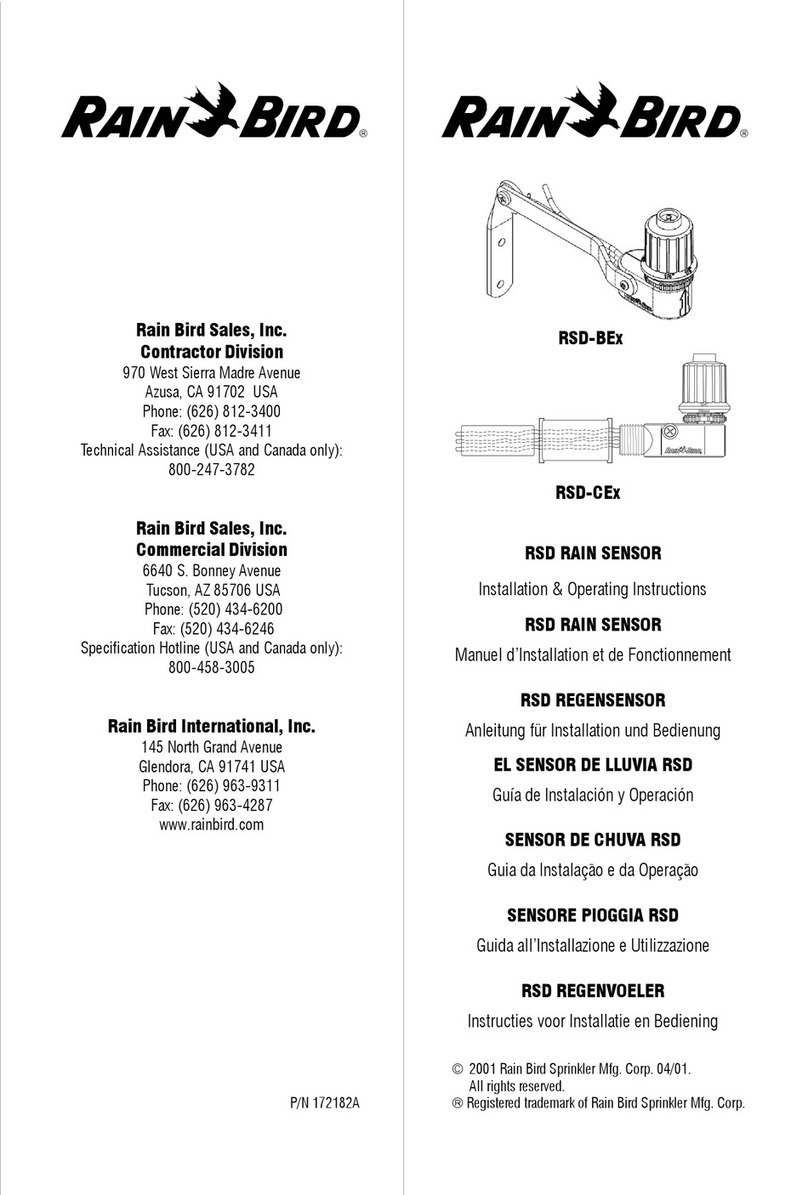
Rain Bird
Rain Bird RSD-BEx Installation & operating instructions
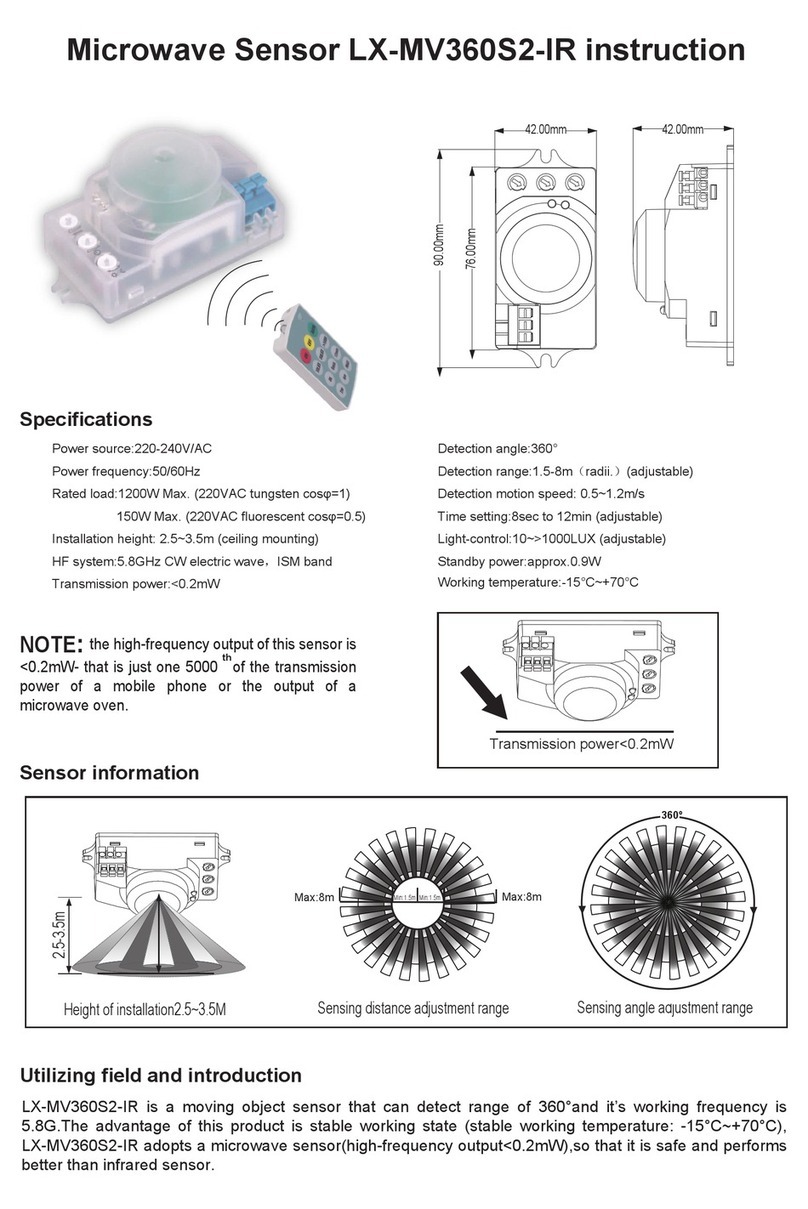
Lexing
Lexing LX-MV360S2-IR Series Instruction
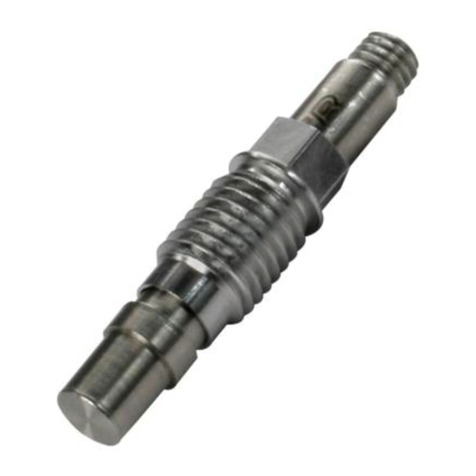
PCB Piezotronics
PCB Piezotronics 113B21 Installation and operating manual
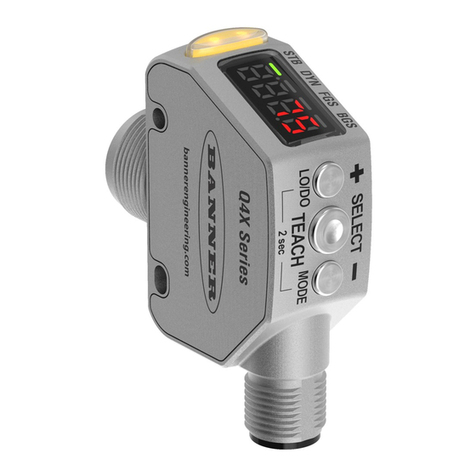
Banner
Banner Q4X Series user guide
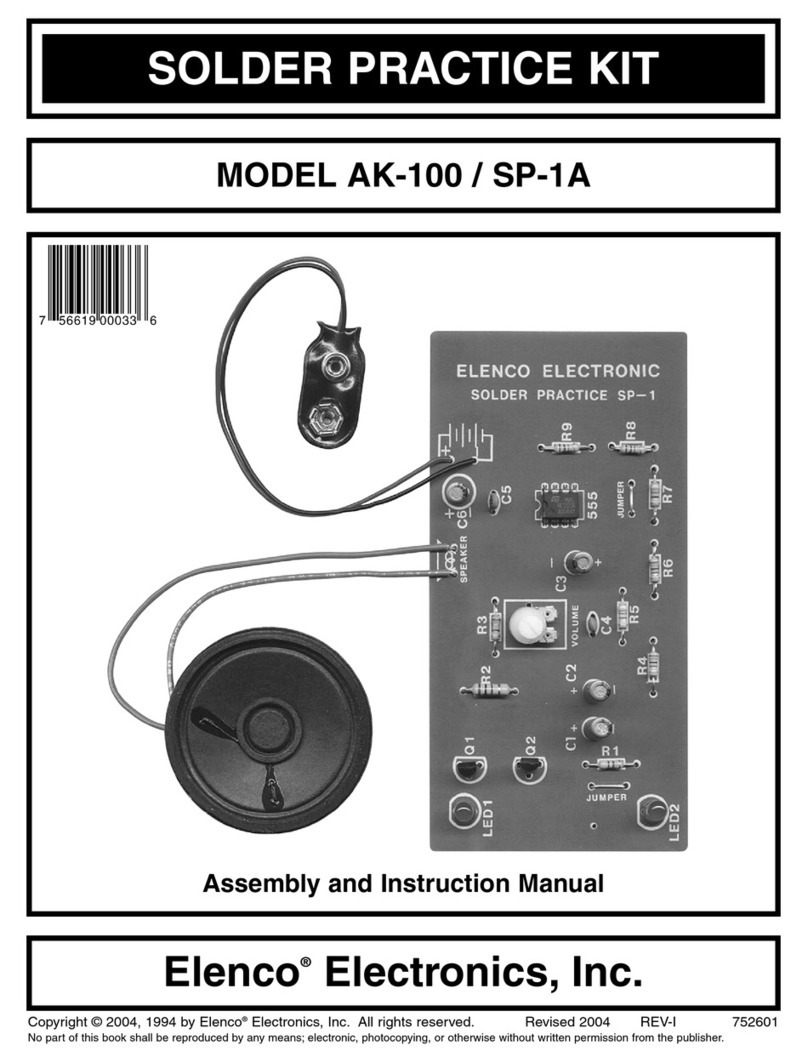
Elenco Electronics
Elenco Electronics AK-100/SP-1A Assembly and instruction manual
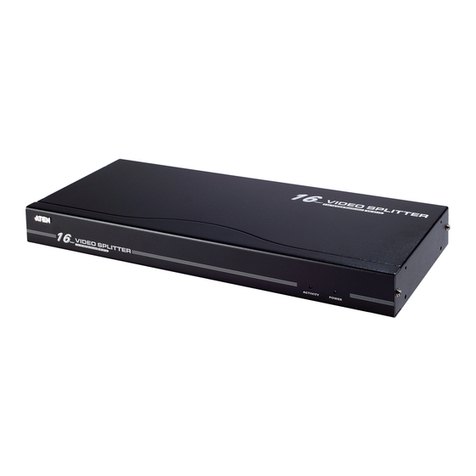
ATEN
ATEN VS-0116 user manual
